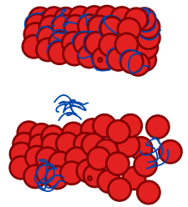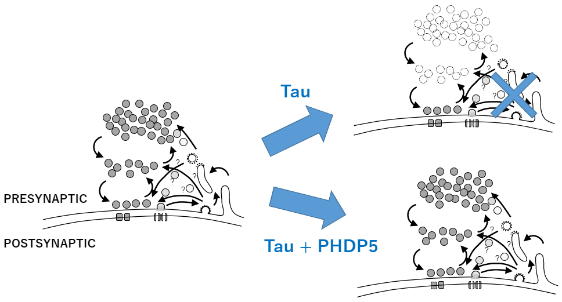New Peptide Drug for the Treatment of Alzheimer's Disease (No. 0230)
|
|
<< Back to all technologies |
Summary
Alzheimer's disease (AD) is estimated to affect about 50 million people worldwide and there are currently no effective treatments. The only approved drugs for AD, i.e. acetylcholinesterase inhibitors and NMDA receptor antagonists, have no effect on the organization of nerves and do not prolong patients’ lives. Other approaches such as the administration of L-DOPA are not permanent, and the disease recurs with depletion due to dopaminergic neuron death. A team of OIST researchers has elucidated the presynaptic mechanisms of neurodegenerative disease and has developed a synthetic peptide which inhibits MT- dynamin interaction and rescues tau protein-induced impairments of endocytosis, restoring neurotransmission. This is a promising new therapeutic approach to durably restore cognitive function in patients with neurodegenerative conditions such as Alzheimer’s and Parkinson’s disease.
Applications
- Drug development
- Neurodegenerative diseases
- Alzheimer’s disease
Advantages
- Restores synaptic function
- Middle molecule
Technology
Cell biological studies related to neurodegenerative diseases have mainly targeted neuronal cell death and post-synaptic dysfunction. Instead, by studying the effects of neurodegenerative disease on pre-synaptic function, the OIST team found that wild-type hyperphosphorylated tau (WT h-tau) causes dynamin deficiency through the assembly of microtubules (MTs), impairing synaptic vesicle endocytosis and, consequently, synaptic transmission. To prevent the toxic effects of WT h-tau on endocytosis and transmission, the team developed a dominant-negative peptide, PHDP5, to block MT-dynamin binding and rescue the loss of synaptic function.
Media Coverage and Presentations
CONTACT FOR MORE INFORMATION
![]() Graham Garner
Graham Garner
Technology Licensing Section
![]() tls@oist.jp
tls@oist.jp
![]() +81(0)98-966-8937
+81(0)98-966-8937






